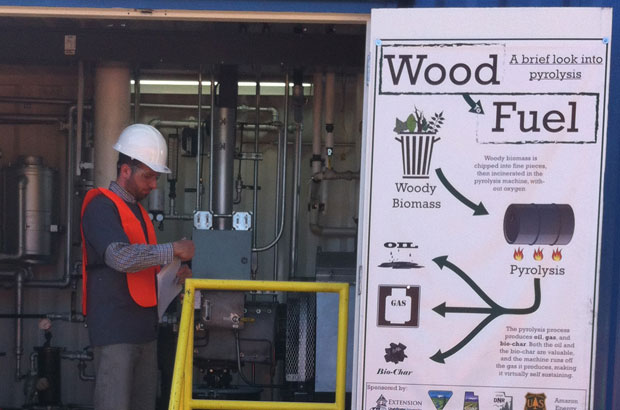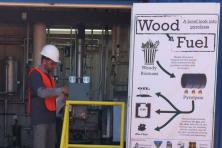Pacific Northwest forests are the crown jewels of our vast natural wealth. They play a critical role as carbon sinks, recreation hotspots, habitat for wildlife and drivers of economic growth. The Northwest is primed for a golden opportunity at the intersection of sustainable forestry, reinvigorated rural economies and cleaner transportation fuels.
Currently many Northwest forests are in jeopardy. Overstocked forests have proliferated as a result of suppression of naturally occurring fires and reduced logging. OregonForests.org notes that “40% of Oregon’s federal forestland has been designated as high-risk for uncharacteristically intense fire” and estimates the cost of thinning an acre of overstocked forest costs $500 compared to $5,000 for fighting fire on the same acre. Figuring out a way to generate demand for forest thinning by using forest residues as a feedstock for bioenergy can reduce the risk of devastating wildfire costs, cut greenhouse gas and particulate emissions and save federal and state tax dollars spent on maintenance. As highlighted in the Sustainable Aviation Fuels Northwest report that Climate Solutions spearheaded with aviation industry leaders several years ago, forest residues provide an important opportunity for our region.
Processes and markets that generate demand for forest residuals are cornerstones of the forest health-bioeconomy symbiosis. Pyrolysis, burning organic matter in an oxygen starved environment, generates three materials: biochar (solid state material similar to charcoal), bio-oil (a dark, dense, viscous liquid) and syngas (mostly carbon monoxide and hydrogen). While there still remain hurdles of cost, scale, and commercial viability to overcome, pyrolitic bio-oil could play an important role in the Northwest’s energy future as a component of cleaner transportation fuels and renewable polymers. Biochar can be added to soil to increase water and nutrient retention, used to filter heavy metals from water and applied as a substitute for coal in cement plants, sequestering carbon all the while. Mobile pyrolysis machines capable of operating in remote forest locations can use syngas to run the pyrolysis machines themselves, thus lowering fuel costs and reducing carbon emissions.
A US Forest Service and the USDA partnership project that began in autumn 2013 created state wood energy teams to help facilitate collaboration in the forestry health-bioeconomy space. From their inception, Agriculture Secretary Vilsak hoped these teams would “… help us find innovative ways to use leftover wood to create renewable energy and support good jobs in rural America”. In early May, wood energy teams from Alaska, western States and Canada met in the Columbia Gorge town of Stevenson, Washington to highlight the need for small scale, distributed solutions that can access residues and other biomass in overstocked forest areas. Many participants at that gathering believe that small scale solutions are the most economical and practical option, and that the benefits of combined heat and power make a distributed model more attractive than larger scale electrical generation.[CB1] Two commercial-scale mobile pyrolysis machines were on display, successfully churning residual lumber waste into bio-oil and biochar before intrigued audiences. An air of opportunity and excitement prevailed at the demos.
Done right, harvesting bioenergy from forest residues has the potential to be an excellent solution with positive societal, economic and environmental impacts. We were excited to see leaders from a wide variety of sectors coming together to find answers that work.

